An Experimental Investigation of Static Properties of Bio-Oils and SAE40 Oil in Journal Bearing Applications
Abstract
:1. Introduction
2. Materials and Methods
2.1. Design of Journal Bearing Test Rig (JBTR)
2.2. Experimental Modal Analysis
2.3. Numerical Modal Analysis
2.4. Dynamic Viscosity Measurement
2.5. Bearing Temperature Measurement
3. Results and Discussion
3.1. Experimental Modal Analysis
3.2. Numerical Modal Analysis
3.3. Bearing Temperature Measurement
4. Conclusions
- For all three speeds, i.e., 1000, 1500, and 2000 rpm, the bio-oils recorded minimum temperature;
- At 1000 rpm, rapeseed oil recorded a 9.2% lower temperature than SAE40. Similarly, at 2000 rpm, rapeseed oil recorded the minimum temperature, which was 2.5% lower than SAE40;
- At 1500 rpm, palm olein recorded the minimum temperature, which was 1.8% less than SAE40.
Author Contributions
Funding
Institutional Review Board Statement
Informed Consent Statement
Data Availability Statement
Acknowledgments
Conflicts of Interest
References
- Rohm, H.; Jaros, D. Rheological Methods: Instrumentation. Encycl. Dairy Sci. 2022, 2, 530–536. [Google Scholar] [CrossRef]
- Wróblewski, P. Analysis of Torque Waveforms in Two-Cylinder Engines for Ultralight Aircraft Propulsion Operating on 0W-8 and 0W-16 Oils at High Thermal Loads Using the Diamond-Like Carbon Composite Coating. SAE Int. J. Engines 2021, 15, 8–11. [Google Scholar] [CrossRef]
- Bair, S.; Khonsari, M.; Winer, W. High-pressure rheology of lubricants and limitations of the Reynolds equation. Tribol. Int. 1998, 31, 573–586. [Google Scholar] [CrossRef]
- Li, H.; Wang, Y.; Zhong, N.; Chen, Y.; Yin, Z. Study on the performance of journal bearings in different lubricants by CFD and FSI method with thermal effect and cavitation. In Proceedings of the 5th International Conference on Mechanical, Materials and Manufacturing (ICMMM 2018), January 2018; Volume 249, p. 03006. [Google Scholar]
- Nowak, P.; Kucharska, K.; Kami, M. Ecological and Health Effects of Lubricant Oils Emitted into the Environment. Int. J. Environ. Res. Public Health 2019, 16, 3002. [Google Scholar] [CrossRef] [PubMed] [Green Version]
- Nikolakopoulos, P.G.; Bompos, D.A. Experimental Measurements of Journal Bearing Friction Using Mineral, Synthetic, and Bio-Based Lubricants. Lubricants 2015, 3, 155–163. [Google Scholar] [CrossRef] [Green Version]
- Ambhore, P.J.; Hemanadth, J.; Gawande, S.H. Bio-Lubricants for Hydrodynamic Bearings. J. Bio. Tribo-Corros. 2020, 6, 87. [Google Scholar] [CrossRef]
- Kržan, B. Study on the Tribological Performance of Vegetable Oils. Goriva i Maz. 2010, 49, 360–367. [Google Scholar]
- Reeves, C.J.; Menezes, P.L.; Jen, T.-C.; Lovell, M.R. The influence of fatty acids on tribological and thermal properties of natural oils as sustainable biolubricants. Tribol. Int. 2015, 90, 123–134. [Google Scholar] [CrossRef]
- Syahir, A.Z.; Zulkifli, N.W.M.; Masjuki, H.H.; Kalam, M.A.; Alabdulkarem, A.; Gulzar, M.; Khuong, L.S.; Harith, M.H. A review on bio-based lubricants and their applications. J. Clean. Prod. 2017, 168, 997–1016. [Google Scholar] [CrossRef]
- Shahabuddin, M.; Masjuki, H.; Kalam, M.; Bhuiya, M.; Mehat, H. Comparative tribological investigation of bio-lubricant formulated from a non-edible oil source (Jatropha oil). Ind. Crop. Prod. 2013, 47, 323–330. [Google Scholar] [CrossRef]
- Zulkifli, N.; Kalam, A.; Masjuki, H.; Shahabuddin, M.; Yunus, R. Wear prevention characteristics of a palm oil-based TMP (trimethylolpropane) ester as an engine lubricant. Energy 2013, 54, 167–173. [Google Scholar] [CrossRef]
- Wróblewski, P.; Rogólski, R. Experimental Analysis of the Influence of the Application of TiN, TiAlN, CrN and DLC1 Coatings on the Friction Losses in an Aviation Internal Combustion Engine Intended for the Propulsion of Ultralight Aircraft. Materials 2021, 14, 6839. [Google Scholar] [CrossRef] [PubMed]
- Trzepieciński, T. Tribological Performance of Environmentally Friendly Bio-Degradable Lubricants Based on a Combination of Boric Acid and Bio-Based Oils. Materials 2020, 13, 3892. [Google Scholar] [CrossRef] [PubMed]
- Borugadda, V.B.; Goud, V.V. Improved thermo-oxidative stability of structurally modified waste cooking oil methyl esters for bio-lubricant application. J. Clean. Prod. 2016, 112, 4515–4524. [Google Scholar] [CrossRef]
- Chaurasia, S.K.; Singh, N.K.; Singh, L.K. Friction and wear behavior of chemically modified Sal (Shorea Robusta) oil for bio based lubricant application with effect of CuO nanoparticles. Fuel 2020, 282, 118762. [Google Scholar] [CrossRef]
- Gemsprim, M.S.; Babu, N.; Udhayakumar, S. Tribological evaluation of vegetable oil-based lubricant blends. Mater. Today Proc. 2021, 37, 2660–2665. [Google Scholar] [CrossRef]
- Georgescu, C.; Solea, L.C.; Deleanu, L. Additivation of vegetal oils for improving tribological characteristics. IOP Conf. Ser. Mater. Sci. Eng. 2019, 514, 012012. [Google Scholar] [CrossRef]
- Sapawe, N.; Hanafi, M.F.; Samion, S. The Use of Palm Oil as New Alternative Biolubricant for Improving Anti-Friction and Anti-Wear Properties. Mater. Today Proc. 2019, 19, 1126–1135. [Google Scholar] [CrossRef]
- Shah, R.; Woydt, M.; Zhang, S. The Economic and Environmental Significance of Sustainable Lubricants. Lubricants 2021, 9, 21. [Google Scholar] [CrossRef]
- Mobarak, H.; Mohamad, E.N.; Masjuki, H.; Kalam, A.; Al Mahmud, K.; Habibullah, M.; Ashraful, A. The prospects of biolubricants as alternatives in automotive applications. Renew. Sustain. Energy Rev. 2014, 33, 34–43. [Google Scholar] [CrossRef]
- Zahid, R.; Bhutta, M.U.; Mufti, R.A.; Abdullah, M.U.; Masjuki, H.H.; Varman, M.; Kalam, M.A.; Ali, M.A.; Aslam, J.; Akhtar, K. Friction and Wear Performance Evaluation of Bio-Lubricants and DLC Coatings on Cam/Tappet Interface of Internal Combustion Engines. Materials 2021, 14, 7206. [Google Scholar] [CrossRef] [PubMed]
- Chatterton, S.; Pennacchi, P.; Vania, A. Optimized Tribo-Design of Lubricants for Power Loss Reduction in Journal Bearings Used in Process Industry; Springer International Publishing: Rio de Janeiro, Brazil, 2018; ISBN 9783319992624. [Google Scholar]
- Rao, T.V.V.L.N.; Rani, A.M.A.; Awang, M.; Baharom, M. An overview of research on biolubricants in Malaysia and Japan for tribological applications. J. Tribol. 2018, 18, 40–57. [Google Scholar]
- Cecilia, J.A.; Ballesteros Plata, D.; Alves Saboya, R.M.; Tavares de Luna, F.M.; Cavalcante, C.L., Jr.; Rodríguez-Castellón, E. An Overview of the Biolubricant Production Process: Challenges and Future Perspectives. Processes 2020, 8, 257. [Google Scholar] [CrossRef] [Green Version]
- Mitchell, M.R.; Link, R.E.; Wale, D.; Mba, D. A Journal Bearing Test Rig with Reduced Uncertainty: Some Design Considerations. J. Test. Eval. 2007, 35, 349. [Google Scholar] [CrossRef]
- Mirev, A.; Rakanov, Y. Hydrodynamic journal bearing test rig with elastic deformations of contact surfaces capabilities. In Proceedings of the XV International Scientific Conference “RE & IT–2016” Renewable Energies and Innovative Technologies, Smolyan, Bulgaria, 10–11 June 2016. [Google Scholar]
- Ciulli, E.; Forte, P.; Libraschi, M.; Nuti, M. Set-up of a novel test plant for high power turbomachinery tilting pad journal bearings. Tribol. Int. 2018, 127, 276–287. [Google Scholar] [CrossRef]
- Li, Q.; Zhang, S.; Wang, Y.; Xu, W.; Wang, Z. A dynamic response test rig of a full-scale rotor—Journal bearing system. Proc. Inst. Mech. Eng. Part J J. Eng. Tribol. 2019, 233, 649–659. [Google Scholar] [CrossRef]
- Cloud, C.H.; Byrne, J.M. Fundamentals of Fluid Film Journal Bearing Operation and Modeling. In Proceedings of the 34th Turbomachinery Conference, Dallas, TX, USA, 12–15 December 2005; Available online: https://oaktrust.library.tamu.edu/bitstream/handle/1969.1/163226/t34-toc.pdf?sequence=1&isAllowed=y (accessed on 13 November 2021).
- Childs, P.R.N. Shafts. Mech. Des. 2021, 113–164. [Google Scholar] [CrossRef]
- Nik, W.W.; Ani, F.N.; Masjuki, H.; Giap, S.E. Rheology of bio-edible oils according to several rheological models and its potential as hydraulic fluid. Ind. Crop. Prod. 2005, 22, 249–255. [Google Scholar] [CrossRef]
- Idrees Ali, S.; Reshi, M. Rheological review on potential of bio-lubricants. Int. J. Chem. Stud. 2018, 6, 1135–1138. [Google Scholar]
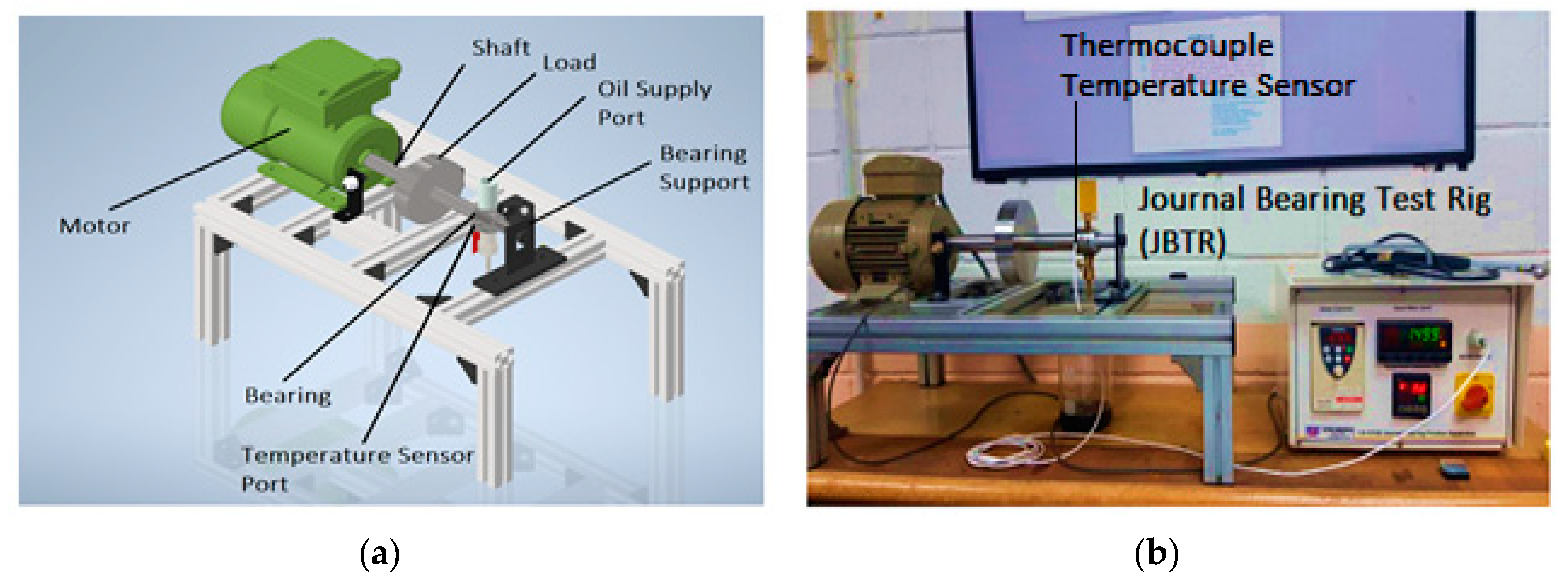
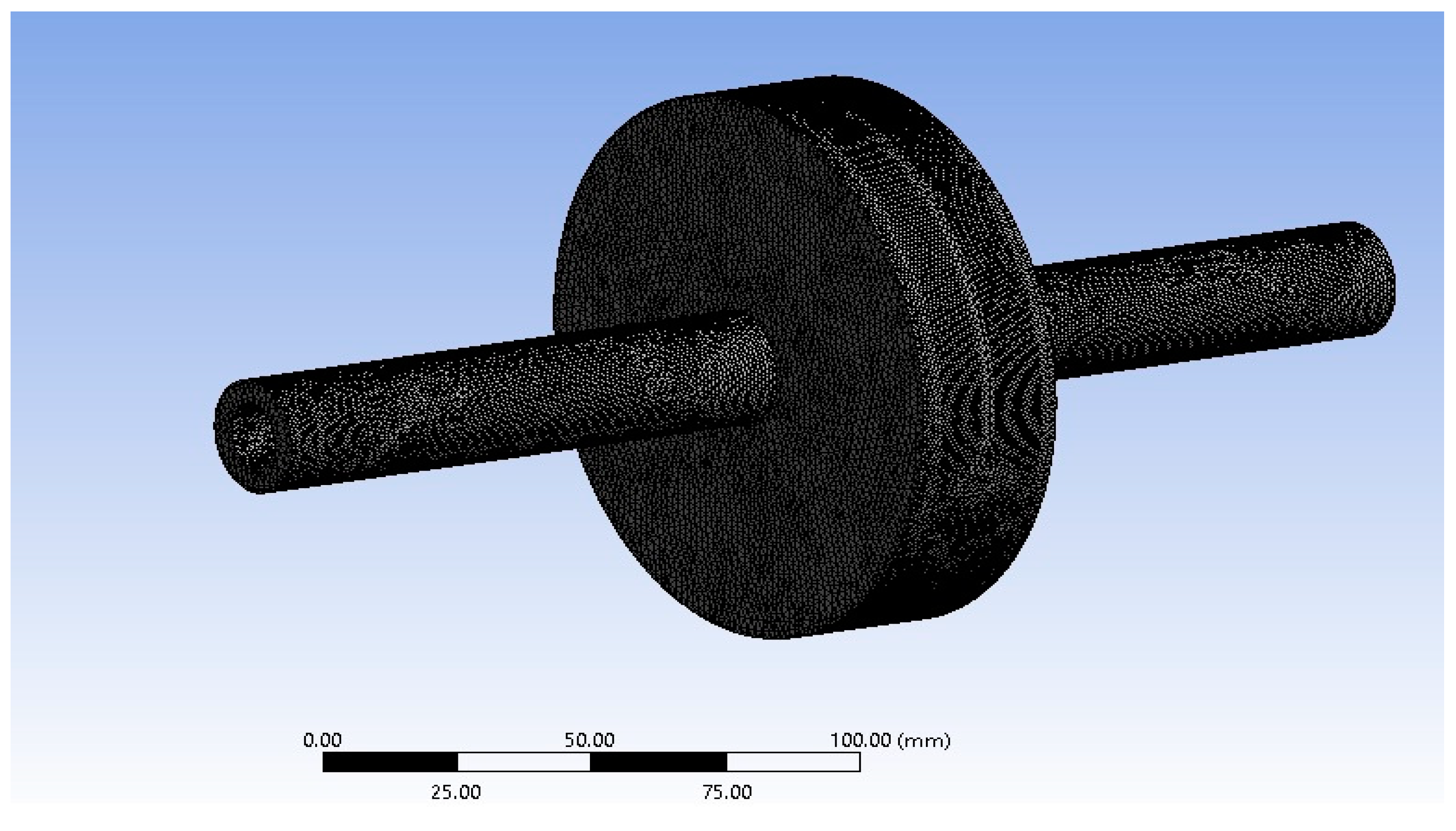
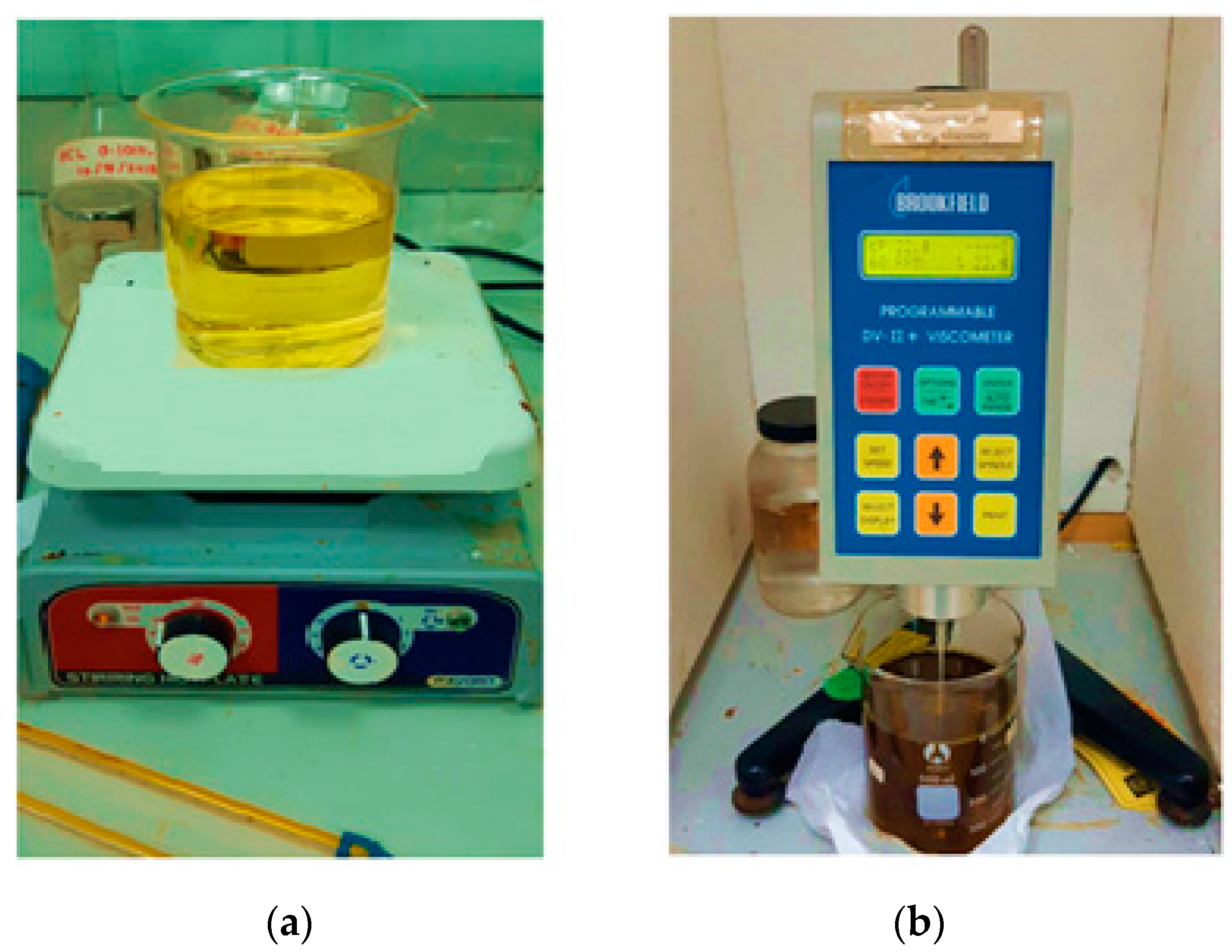


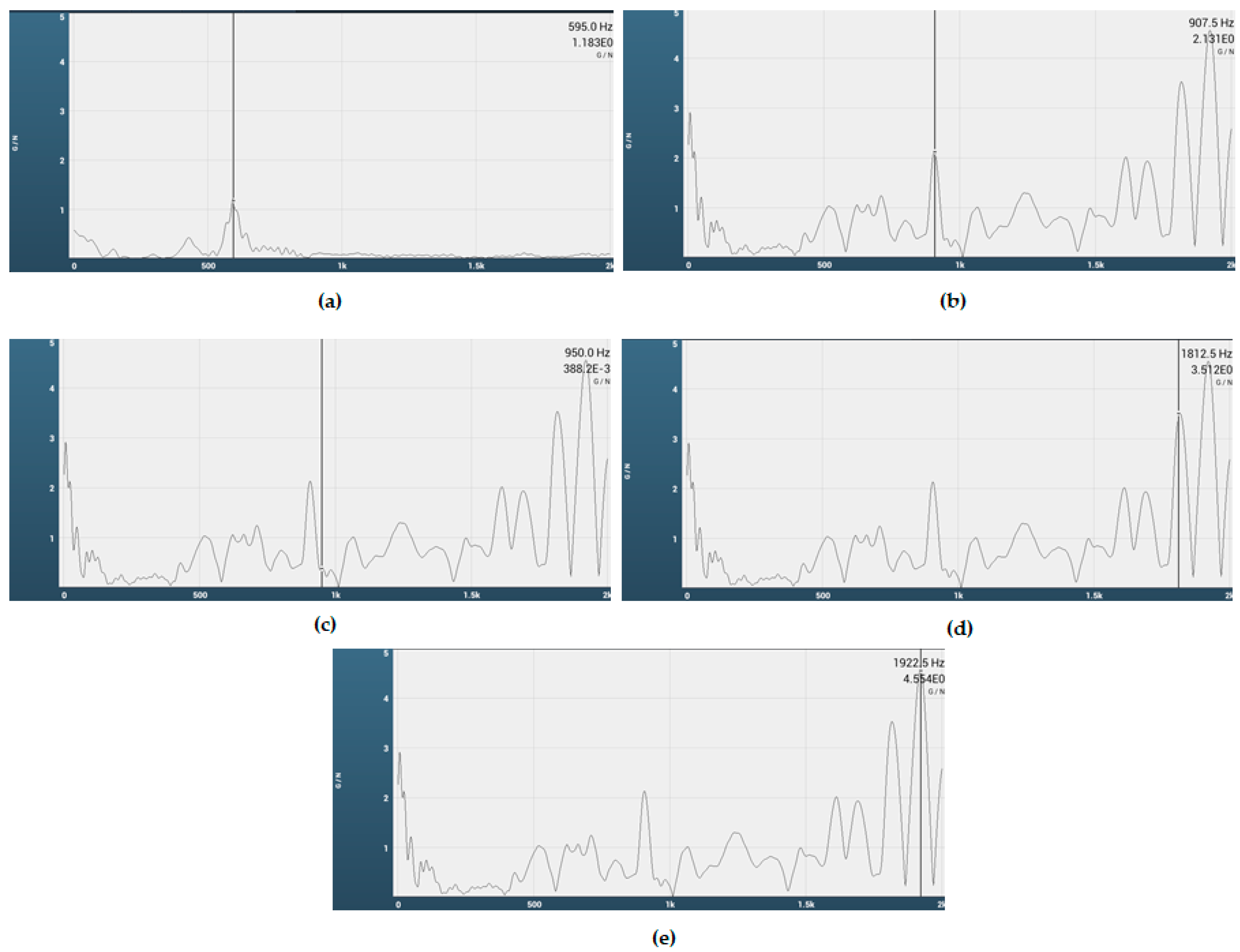
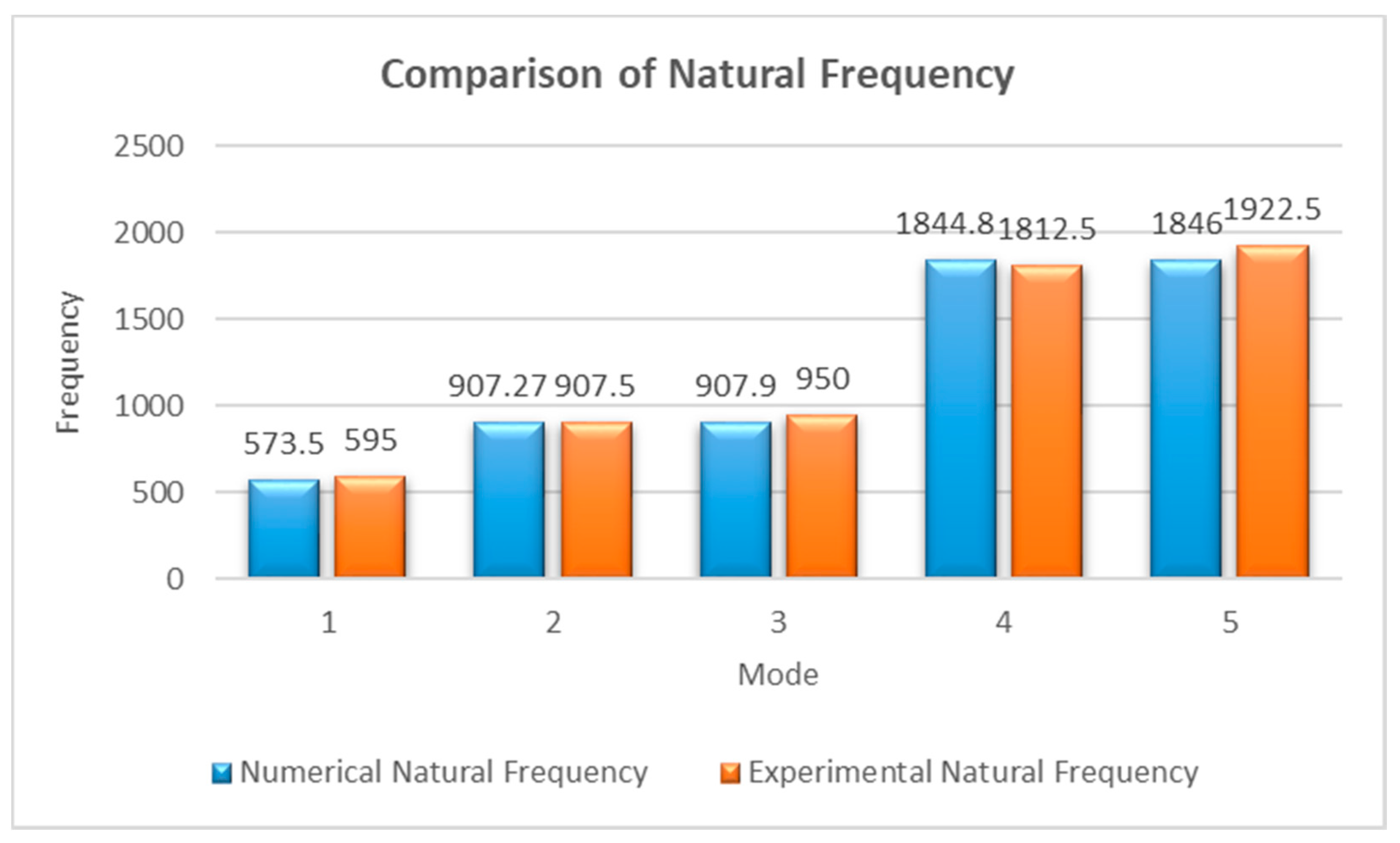
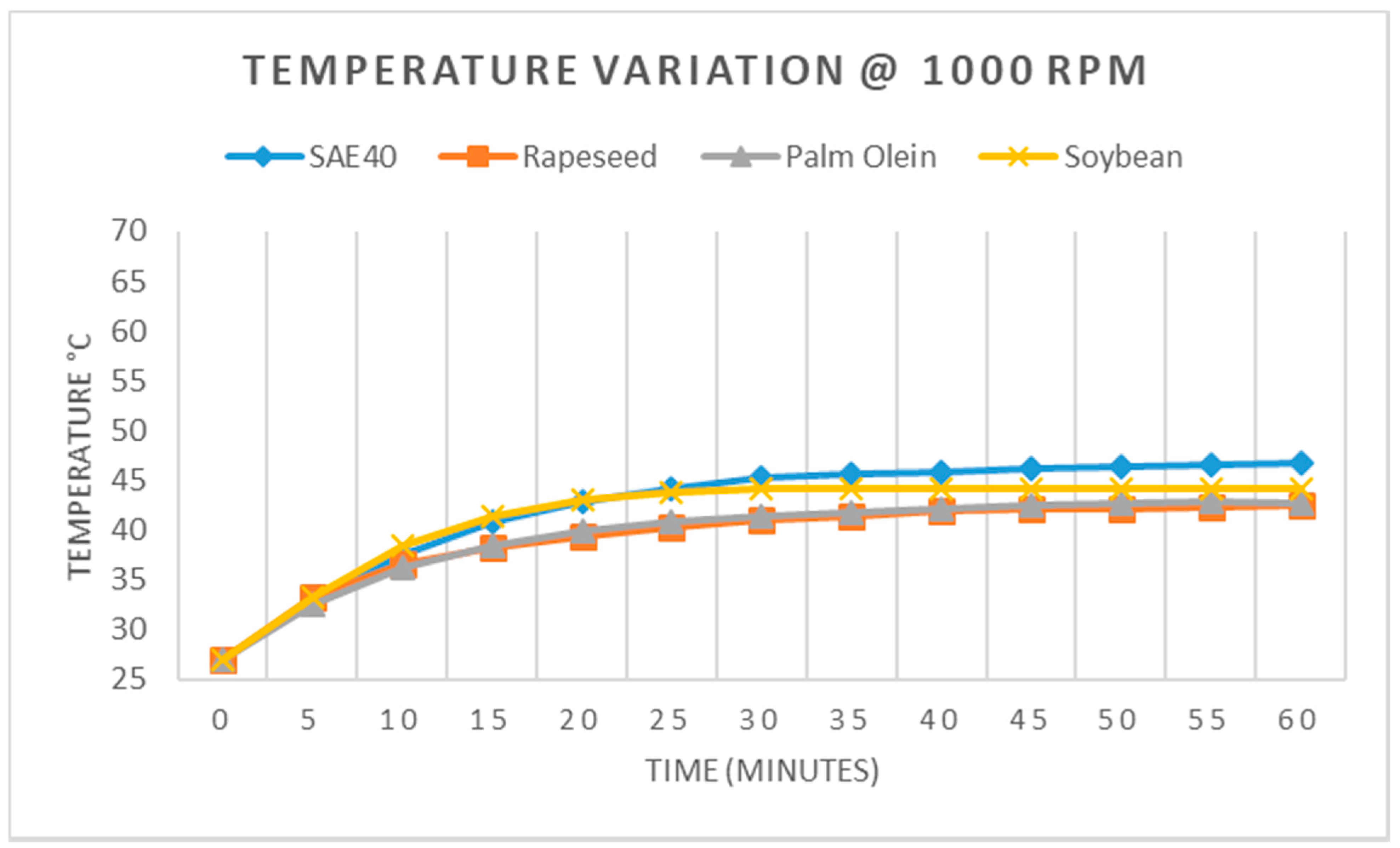



| No. | Description | Specification |
|---|---|---|
| 1 | Bearing length (L) | 12.5 mm |
| 2 | Inner diameter for plain bearing (d) | 25.14 mm |
| 3 | Shaft diameter (Φ) | 25 mm |
| 4 | Weight of journal shaft (W) | 9 N |
| 5 | Weight of Load | 25 N |
| 6 | Total clearance (CT) | 0.14 mm |
| 7 | Radial clearance (CR) | 0.07 mm |
| 8 | L/D ratio | 0.5 |
| 9 | Operating speed | 1000, 1500, 2000 rpm |
| Properties | Value |
|---|---|
| Density | 7.75 × 10−6 kg mm−3 |
| Young’s modulus (MPa) | 1.93 × 105 |
| Poisson’s ratio | 0.31 |
| Bulk modulus (MPa) | 1.693 × 105 |
| Shear modulus (MPa) | 73,664 |
| Properties | SAE40 | Palm Olein | Rapeseed | Soya Bean |
|---|---|---|---|---|
| Flash point (°C) | 235 | 324 | 326 | 330 |
| Specific heat, Cp (KJ/Kg-C) | 2.53 | 1.9 | 1.96 | 1.88 |
| Thermal conductivity (W/m-C) | 0.145 | 0.172 | 0.168 | 0.185 |
| Density at 15 °C (g/cm3) | 0.890 | 0.912 | 0.915 | 0.924 |
Publisher’s Note: MDPI stays neutral with regard to jurisdictional claims in published maps and institutional affiliations. |
© 2022 by the authors. Licensee MDPI, Basel, Switzerland. This article is an open access article distributed under the terms and conditions of the Creative Commons Attribution (CC BY) license (https://creativecommons.org/licenses/by/4.0/).
Share and Cite
Sadiq, M.I.; Ghopa, W.A.; Nuawi, M.Z.; Rasani, M.R.; Ibrahim, S. An Experimental Investigation of Static Properties of Bio-Oils and SAE40 Oil in Journal Bearing Applications. Materials 2022, 15, 2247. https://doi.org/10.3390/ma15062247
Sadiq MI, Ghopa WA, Nuawi MZ, Rasani MR, Ibrahim S. An Experimental Investigation of Static Properties of Bio-Oils and SAE40 Oil in Journal Bearing Applications. Materials. 2022; 15(6):2247. https://doi.org/10.3390/ma15062247
Chicago/Turabian StyleSadiq, Muhammad Imran, Wan Aizon Ghopa, Mohd Zaki Nuawi, Mohammad Rasidi Rasani, and Sofian Ibrahim. 2022. "An Experimental Investigation of Static Properties of Bio-Oils and SAE40 Oil in Journal Bearing Applications" Materials 15, no. 6: 2247. https://doi.org/10.3390/ma15062247






